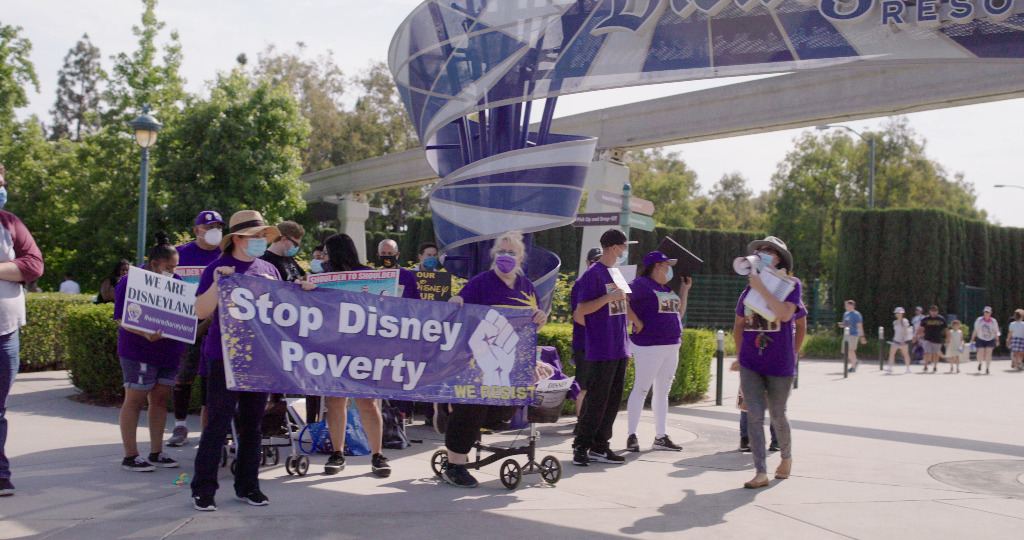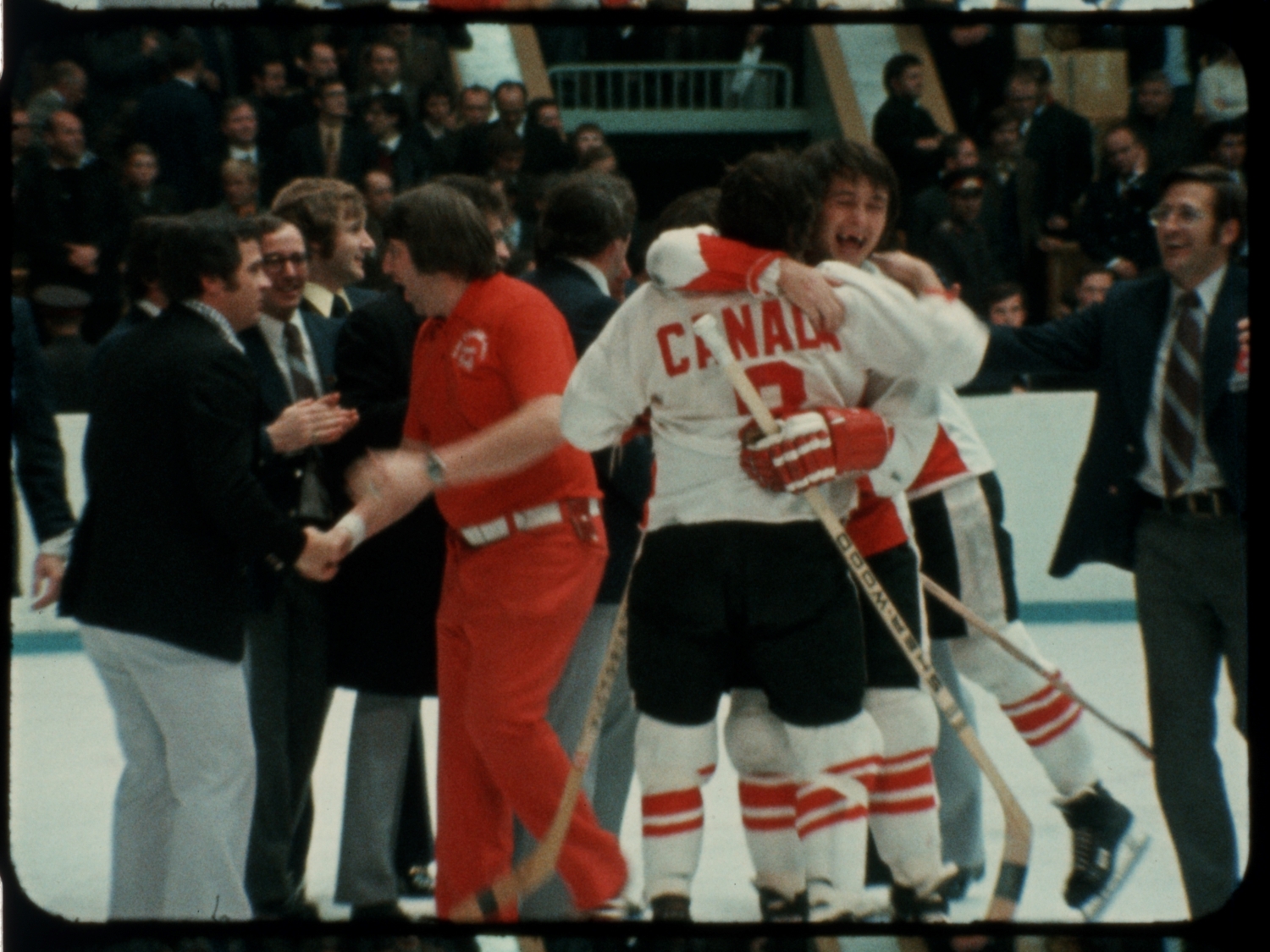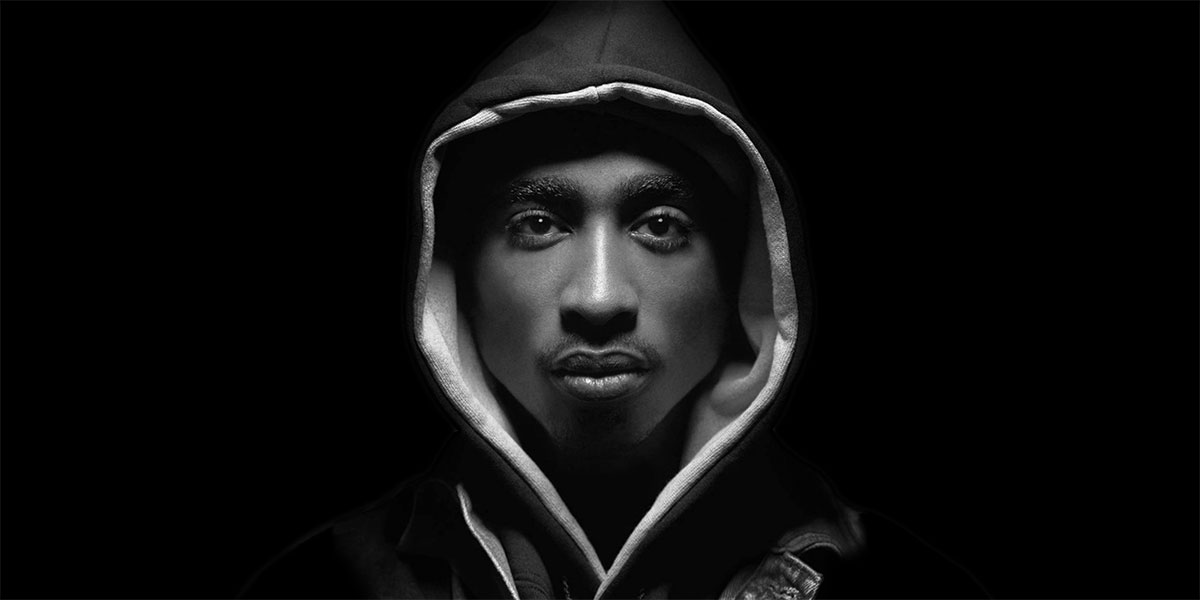“Too many people have given up on this notion of the American Dream because it has become out of reach for so many people,” says director Kathleen Hughes. “I think Abby’s solution might help us to return to a place where we we’re building it back.”
Hughes joins director Abigail E. Disney in tackling the USA’s widening rich/poor gap in the documentary The American Dream and Other Fairy Tales. The film provocatively sees Disney turn the lens on her family legacy as she and Hughes examine the sorry state of affairs in which employees at Disneyland find themselves when men atop the corporate ladder receive record paydays. Disney wonders what happened in the years since her grandfather, Roy E. Disney, reigned over the magic kingdom that he founded with his brother Walt. The film looks back at how the Disney family prospered, but so too did employees across the corporation: Roy and Walt certainly profited from their enterprise, but not at the expense of workers who clocked in their hours to provide for their families.
In The American Dream and Other Fairy Tales, which debuted at Sundance and screened in the Scotiabank Big Ideas series at Hot Docs, Disney and Hughes observe a stark difference in the Magic Kingdom then and now. Cast members Ralph, Trina, Ellie, and Artemis are just four of the Disneyland employees who struggle to make ends meet. Their jobs no longer provide both food and shelter: even meeting one is a luxury as the filmmakers see workers like Artemis continually set back by housing instability and surging rental prices. Ellie finds herself caught in a bind where the long hours and low pay of her job make it impossible to afford school. Ralph and Trina, meanwhile, have to make frequent trips to the food bank set up by the cast members to feed their kids. The film uses the Disney situation as a microcosm for the collapse of an American Dream that’s selectively weeded out 99 percent of the workforce. It’s a powerful and thoughtful work that engages directly with the hardships that grew harder during the pandemic and invites viewers to consider what kind of world we want to create: one that contents itself with fairy tales or one where dreams can become reality.
POV spoke with directors Abigail Disney and Kathleen Hughes in advance of the release of The American Dream and Other Fairy Tales.
POV: Pat Mullen
AD: Abigail E. Disney
KH: Kathleen Hughes
This interview has been edited for brevity and clarity.
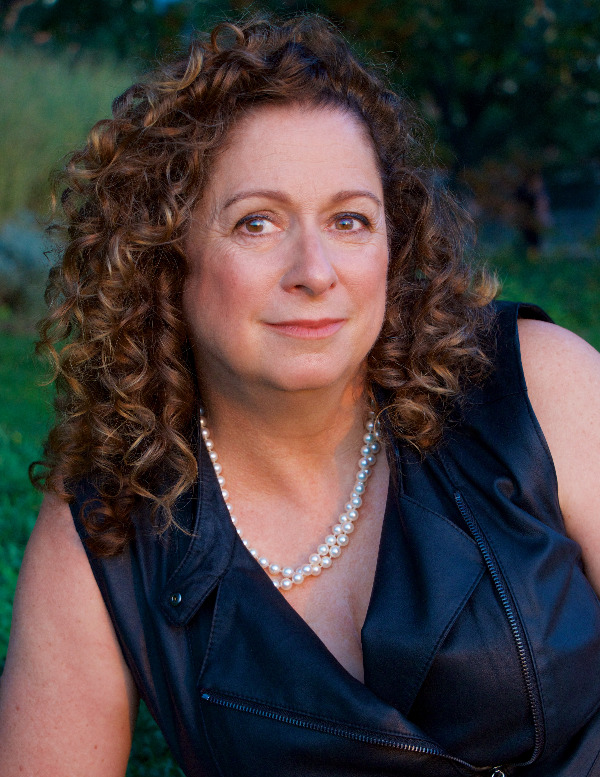
POV: The Disney family offers a great hook for the film, but I was wondering: what is your family story, Kathleen? What did your family like and how did that inform the way you look at the American Dream?
KH: That informs our partnership in many ways. Abby and I come from very different backgrounds. I grew up in working class circumstances. Neither of my parents went to college and yet they managed to support four kids on a single income. We were all able to go to college and experience the “American Dream.” I grew up in the peak of the American Dream, but I was by no means wealthy. In our lifetimes, Abby and I, from different vantage points, have seen that all almost go away for people.
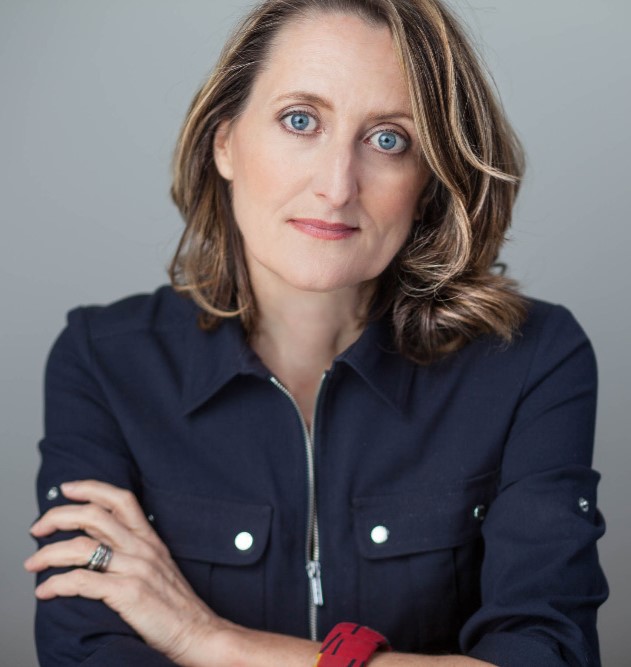
POV: Did the film begin with a personal exploration of Abigail’s family or did it begin when Ralph reached out to you, Abigail?
KH: Abby has cared about this story writ large for a long time, and so have I, but this particular film really started to take shape once Abby went to Congress, but Ralph, in so many ways, inspired it.
AD: Ralph set me in motion. It was the first time anybody had directly reached out to me like that. Once he reached out, I couldn’t say that it wasn’t my job. It just felt very personal.
POV: How did you choose the rest of the cast numbers?
AD: That’s funny because “cast members” are what they call employees at the park. [Laughs.] We talked to a lot of folks at union meetings and a few people emerged carrying aspects of the stories that we needed. Ellie’s talking about trying to get started in life and to get an education. Artemis persistently had housing instability. Ralph and Trina are trying to raise a family. With those three clusters, we could really cover the main stress points even though there’s so much to talk about—healthcare and the like. It doesn’t stop.
KH: And they were brave enough to allow us to bring our cameras into their lives.
POV: What was the feeling in the room when you were sitting in a circle with the cast members and they were raising their hands when you asked how many of them had slept in their car, were on food stamps, or worried about the future? That’s such a powerful scene. Were the responses what you expected?
AD: They were worse than I expected. I was shocked myself and honestly angry. I couldn’t believe how many hands went up for food stamps, for missing medical care. It certainly solidified my conviction that I was on the right track.
KH: It was worse and it was really emotional. I walked away from that day saying we could just run the whole conversation. We couldn’t put all of it in the documentary, but we learned a lot from it. To Abby’s point, I think we knew that we needed to move forward and that we were on the right path. This was not apocryphal. This was just a few people.
AD: We kept getting this pushback from the company saying, “That’s not at all what we are seeing.” I thought it was losing my mind because I was hearing one thing here and hearing another thing there. It struck me as crazy making, but this moment felt irrefutable.
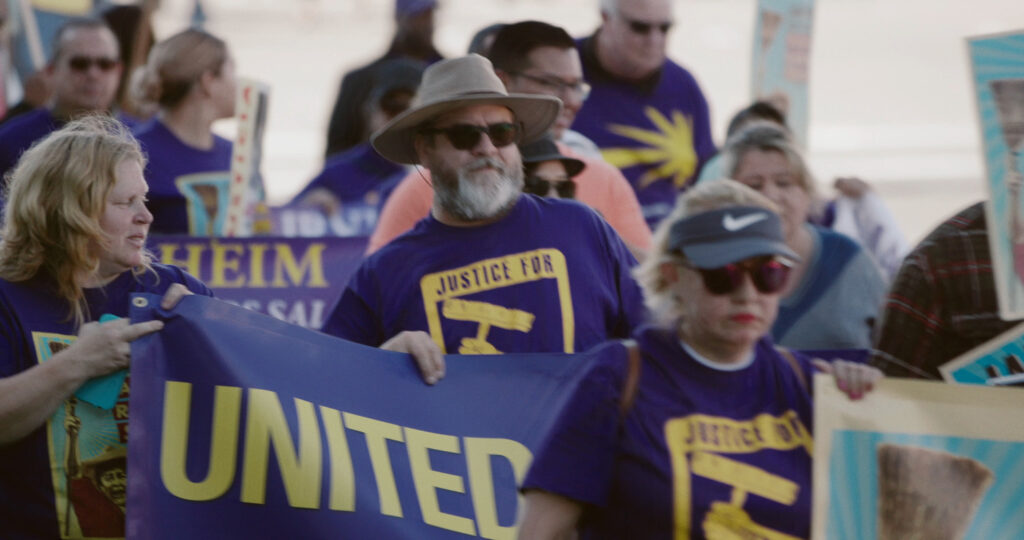
POV: What was the challenge of accessing the unions and the employees, and even being able to film around Disneyland? Disney’s quite proprietary about its image and filming at the park is pretty much nil.
KH: If you actually look closely, it’s written on the tickets that you buy: “There will be no commercial filming” and so forth. They’re very buttoned up about all that stuff.
AD: They’re famously litigious, so we had to be super careful about what we did. You’ll see that we didn’t go into the park at all in the film except through the archives. That was all public publicly available. But we shot around the park and we talked to people. I felt like I could step off the line and there might be a problem. That always felt a little bit dangerous.
POV: How is it making a documentary when you’re on both sides of the camera, Abby? And Kathleen, how does the dynamic work when your co-director is also a subject?
AD: Without Kathleen, it wouldn’t be the film that it is. She’s been in charge of very nicely shutting me down when I’m wrong and encouraging me when I’m right. She’s a great check and balance against my impulses. The edit is actually when it’s really hard. You have to manage your own feelings about your face on screen and try to be coherent.
KH: To some extent, I treated you like I would treat any subject of a film. You can’t push people farther than they want to go and can go. Abby needed to figure out how personal this film was going to be and what she was going to say about her family. I had to give her the time, space, and respect that she needed. You do that with subjects in general, unless you’re going after a polluter or someone who you need to nail to the wall, so to speak. There’s a dance, or a give and take. Abby always knew that she wanted to tell a bigger economic story. The concern she had was to make sure that people understood that this story was really not about her and, in some ways, not even about Disney, but about the larger American economy. That was another balancing act that we were always a juggling.
POV: Where’s about in the timeline of production did the Ted Talk “Dignity Isn’t a Privilege: It’s a Workers’ Right” happen? That talk of articulates a lot of the groundwork for the film, so did that shape some of the edit or were you working through things that you had already shot, Abby?
AD: I had been getting opportunities to talk about these issues publicly, both through the Ted Talk and other places. The Ted Talk was supposed to be on the main stage, but it was the peak of the pandemic. I got to think it all through and present it in a coherent way. I had to do that again and again, honestly, to completely think it through because I wanted to be sure of what I was talking about. People always accuse girls in my position of being “crazy” and I wanted to be sure it didn’t sound “crazy.” I kept checking it, checking it, and checking it. And that was during the pandemic when we were really not able to shoot and when we were trying to figure out how to keep moving forward.
POV: How might the film have ended if the pandemic never happened?
AD: Before the pandemic hit, we were kind of looking at each other and going, “Where’s the arc?” As documentary filmmakers, you have to hang back and leave room for that to make itself known. We were having a hard time finding it and I was starting to get a little afraid. When the pandemic hit, we both went, “Oh no! This is terrible!” until we sat back for a minute thought, “No, actually – this is the arc we were waiting for.” I hate saying the pandemic was a lucky break, but to some extent, it was true.
KH: We can’t really know what the pandemic did and didn’t do for the larger labour issues that we’re watching. Disney might have held salaries even lower. It’s hard to know what would’ve happened from the policy issues’ point of view. We might have spent more time in Anaheim because we could have travelled, but we were suddenly at our desks for the most part and people were not going out.
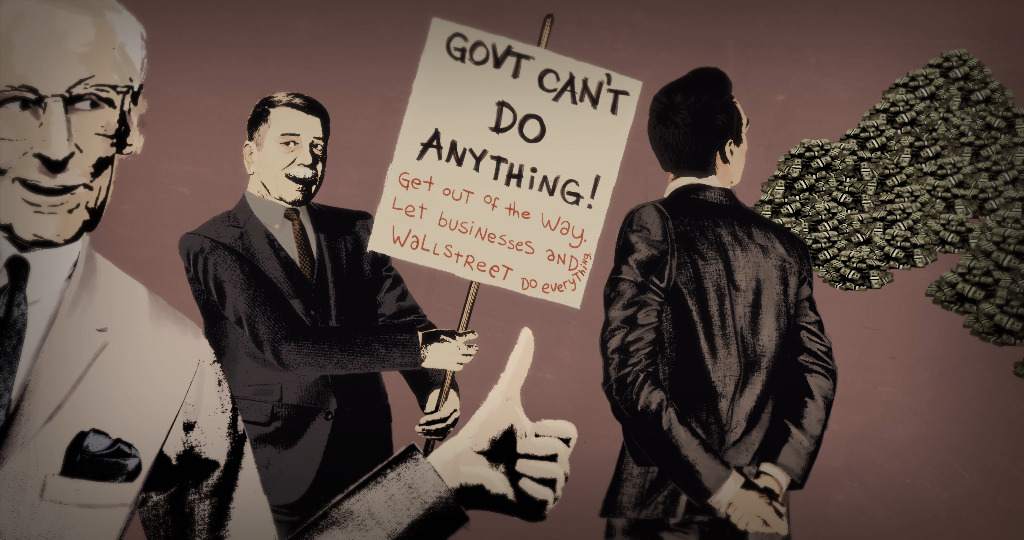
| Courtesy of Sean Donnelly, Awesome + Modest
POV: What is the labour situation independent documentary filmmaking in America right now?
KH: It’s always been difficult and it continues to be difficult because very few steady jobs offer benefits and stability. The people who are this field are often doing it because they have a story they need and want to tell. They’re not buying yachts and living like the billionaires. As documentaries are getting popular, so is the pressure to do documentaries that are more commercial.
AD: Generally speaking, you’re funding a documentary with grants from charitable foundations and charitable individuals. What’s true across the board is that people never get as much money as they actually need to do the film. Across the world of people who ask for money, there’s not enough pay. There aren’t enough benefits. There’s not enough vacation time. Personally, I try to do it better and I think we do it better through Fork [Films] and our filmmaking, but it it’s very hard to say to documentary filmmakers: “You better do as well as you’re hoping Disney will do.” As a necessary byproduct of doing business at Disney, there’s money, but as a necessary byproduct of doing business as an independent documentary filmmaker, there’s less money. There’s an inherent tension between what they do in the for-profit world and what we do. When you see a lot of the same things, it’s replicating what’s happening in the feature film world. Risk aversion is creating a complete death of the imagination.
POV: A lot of conversations we hear in the film relate to risk aversion, even the response to your conversation about “tax me more.” Everyone throws around the word “socialism,” and I think there’s a different tone in the way that word is used here in Canada and in America. Why is socialism a dirty word in the US?
KH: It’s become like “communism” and “socialism.” The right wing and conservative people have started to use it as a weapon and it doesn’t mean what it means in Canada. It basically means, “We are robbing you, the regular person, of your tax dollars to pay for people who don’t deserve what you want us to give them.” That probably started in the 1970s.
AD: We also have this historically degraded political climate we’re living in right now. We don’t have the brightest people running for office, and they grab for the word that implies the most. It’s a way of signaling to the people listening to say, “This is the side I’m on. This is the side she’s on.” It’s not a meaningful exchange of ideas, for sure.
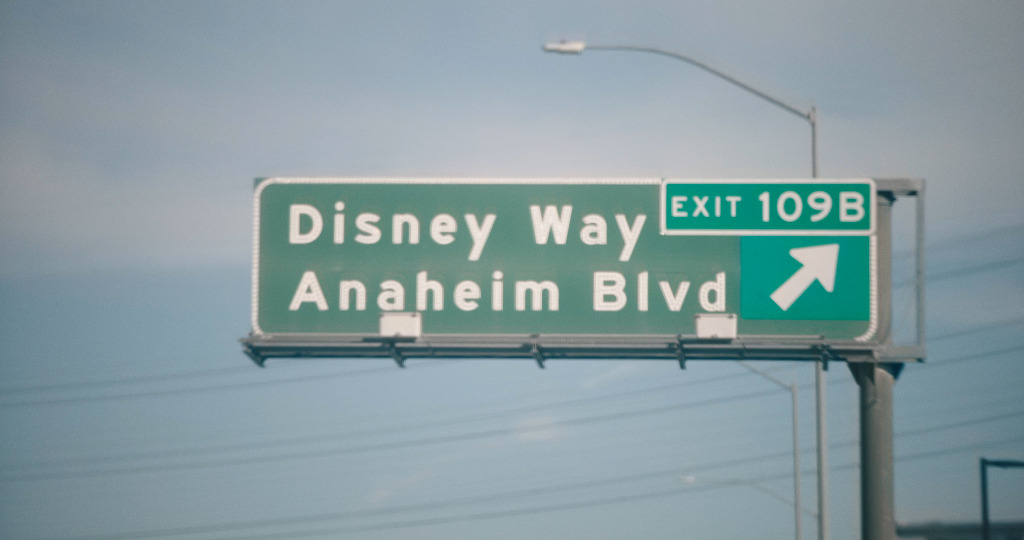
POV: There’s another great dirty word in the film when you talk about the “assholification” of business. So much happened during the time you were filming: Trump was bad in the years before 2020, but it took on a whole other level. How did you decide how much of Trump’s assholification should be in the film and how much to filter?
AD: In a film where you want to welcome people in, you can’t be too specific about the now because everybody’s so inflamed. It wasn’t helpful to point at Trump. I think of Trump, if you’ll forgive the language, as the apotheosis of assholificiation. He’s the thing that happened as a direct result of so much of what was set in motion by Reagan in the 1980s, which was “me first,” and “it’s better to be greedy.” You know: Gordon Gekko ends up being the hero of the movie when he was meant to be the villain. There was a massive social shift. People used to be a little embarrassed and ashamed to be very, very wealthy, and certainly they were ashamed to be called tax cheats, so there was an inversion of our social understanding about how we relate to each other. What I’m talking about when I say “assholification” is that it created a climate in which the asshole rises to the top.
POV: What is the American dream in 2022?
AD: I think that if there were dream that united us as a country, including the people who really love Donald Trump and the people who are big time progressives, it would be to dial back the power of the political elites, the corporate establishment, and an abusive media. We might disagree as to which media is abusive and which political elites need to be dialed back, but, generally speaking, there’s shocking unanimity around the idea that there’s a handful of people who are at the center of power who are taking advantage of everyone else. That’s what our film is about. That’s what Donald Trump got elected on and that is what our politics are currently running on.
My dream is for people to unite around their unified vision. If we could act on that, there might be a chance to restore the idea that there’s a path to, not necessarily wealth, but a comfortable life where you have enough time in the day to enjoy your family and to be a person with meaning.
The American Dream and Other Fairy Tales is now in select theatres and on VOD in the USA




